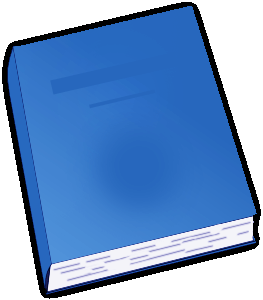|
Books Should Be Free Loyal Books Free Public Domain Audiobooks & eBook Downloads |
|
|
Books Should Be Free Loyal Books Free Public Domain Audiobooks & eBook Downloads |
|
Emergency Childbirth A Reference Guide for Students of the Medical Self-help Training Course, Lesson No. 11 By: United States. Office of Civil Defense |
|---|

Emergency Childbirth: A Comprehensive Guide for Medical Self-Help Training
Emergency Childbirth is an invaluable resource provided by the United States Office of Civil Defense. As part of their Medical Self-Help Training Course, Lesson No. 11, this reference guide offers essential information that is crucial for anyone faced with the daunting task of assisting in childbirth without professional medical support.
The book's content is well-organized and concise, ensuring that the reader can quickly find the information they need during intense and potentially life-threatening situations. From clear step-by-step instructions for the stages of labor to guidance on identifying complications and when to seek additional help, this reference guide covers all aspects of emergency childbirth.
One of the book's main strengths is its balance between being approachable for beginners while still containing a wealth of detailed medical knowledge. Complex medical terminology is explained in an accessible manner, making it easily comprehensible for individuals without prior medical training. The inclusion of illustrations and diagrams further enhances understanding, enabling readers to visualize various childbirth scenarios and procedures.
What sets this guide apart from others is the inclusion of practical advice, tips, and reassurances for individuals who may find themselves in these high-stress situations. The authors genuinely understand the emotional and psychological impact that emergency childbirth can have on both the mother and the assisting individual. By offering guidance on maintaining a calm and supportive environment, the book helps ensure a positive experience for all involved parties.
While primarily targeted towards those completing the Medical Self-Help Training Course, this reference guide is also an excellent resource for expecting parents, caregivers, or anyone wanting to be prepared for unexpected childbirth emergencies. It provides a comprehensive understanding of childbirth procedures, enabling individuals to act confidently and competently in what could be a life-or-death situation.
In conclusion, Emergency Childbirth is an essential reference guide that offers valuable information for individuals who may find themselves faced with the responsibility of assisting in childbirth without professional medical support. By providing a comprehensive understanding of emergency childbirth procedures, this book ensures that readers are equipped with the knowledge and confidence to handle these situations successfully. EMERGENCY CHILDBIRTH A REFERENCE GUIDE FOR STUDENTS OF THE MEDICAL SELF HELP TRAINING COURSE LESSON NO. 11 ACKNOWLEDGMENT We wish to acknowledge with grateful appreciation the many services provided by the American Medical Association, through the Committee on Disaster Medical Care, Council on National Security, Board of Trustees and staff, in the preparation of this handbook. From the inception of studies to determine emergency health techniques and procedures, the Association gave valuable assistance and support. The Committee on Disaster Medical Care of the Council on National Security, AMA, reviewed the material in its various stages of production, and made significant contributions to the content of the handbook. A joint publication of the U.S. DEPARTMENT OF DEFENSE Office of Civil Defense and the U. S. DEPARTMENT OF HEALTH, EDUCATION, AND WELFARE Public Health Service Health Services and Mental Health Administration Division of Emergency Health Services 5600 Fishers Lane, Rockville, Maryland 20852 Reprinted December 1970 EMERGENCY CHILDBIRTH What To Do 1. Let nature be your best helper. Childbirth is a very natural act. 2. At first signs of labor assign the best qualified person to remain with mother... Continue reading book >>
|
| eBook Downloads | |
|---|---|
|
ePUB eBook • iBooks for iPhone and iPad • Nook • Sony Reader |
Kindle eBook • Mobi file format for Kindle |
|
Read eBook • Load eBook in browser |
Text File eBook • Computers • Windows • Mac |
| Review this book |
|---|